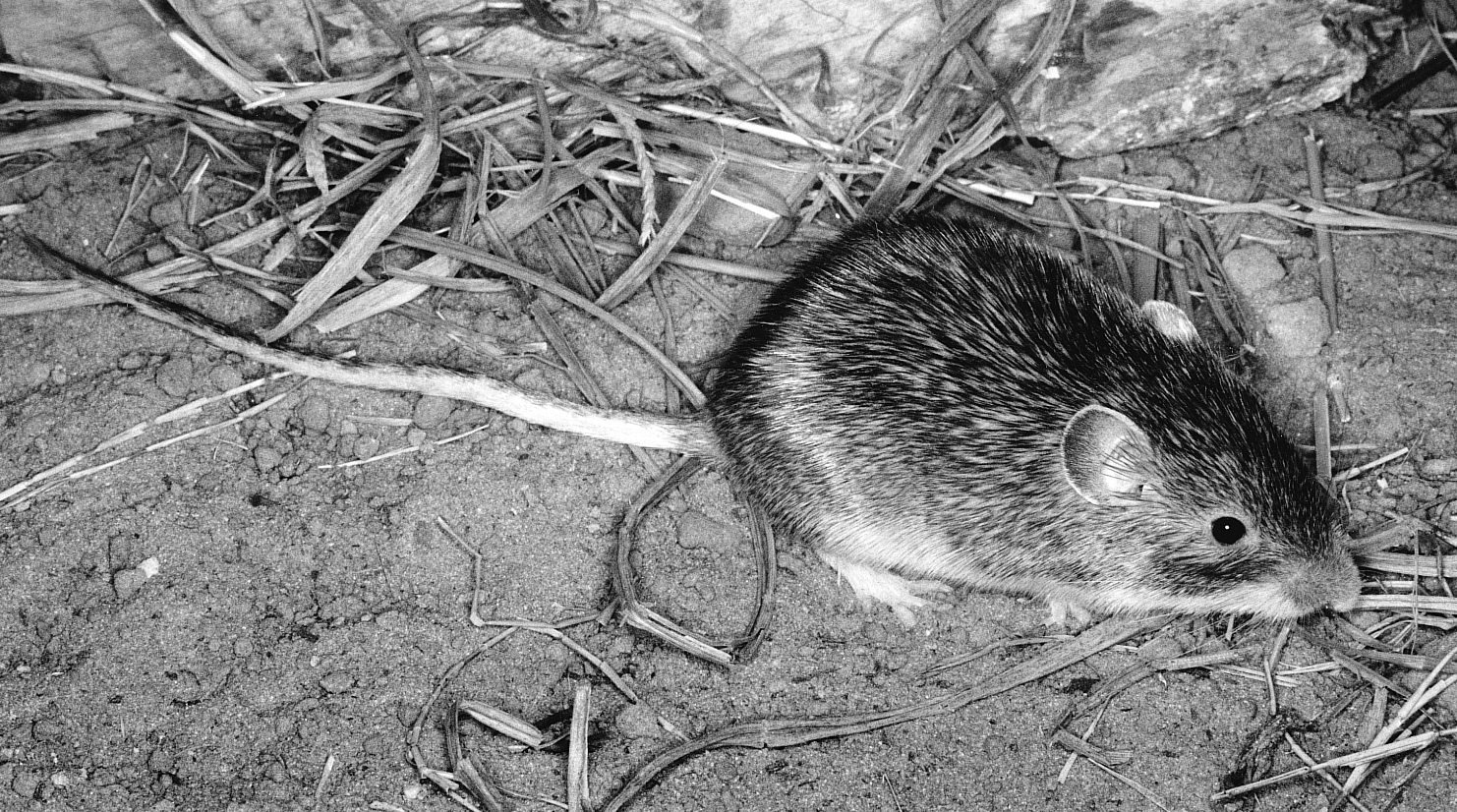MEXICAN SPINY POCKET MOUSE
Liomys irroratus (Gray 1868)
Order Rodentia : Family Heteromyidae
DESCRIPTION. A medium-sized mouse with extremely harsh pelage over entire
upperparts (the hairs flattened, sharp pointed, and grooved); external, fur-lined
cheek pouches; and relatively long tail. Similar in general appearance to the spiny-haired
pocket mouse (Chaetodipus spp.), but upper incisors lack the longitudinal groove on the outer face and the pelage
is much more spiny and harsh. Tail about as long as head and body, sparsely haired
and distinctly bicolor, brownish above, whitish below; upperparts dark gray, grizzled
with orange; underparts pure white; sole of proximal half of hind foot hairy, blackish.
Dental formula: I 1/1, C 0/0, Pm 1/1, M 3/3 × 2 = 20. Averages for external measurements:
total length, 237 mm; tail, 122 mm; hind foot, 30 mm. Weight of males, 50–60 g; of
females, 35–50 g.

DISTRIBUTION. A Mexican species reaching the United States in extreme South Texas, where it has been recorded in seven counties (Cameron, Hidalgo, Jim Hogg, Kenedy, Starr, Willacy, and Zapata) in the lower Rio Grande Valley.

SUBSPECIES. Liomys i. texensis.
HABITS. In southern Texas they live in the densest brush on the ridges forming the old banks of the Rio Grande, along oxbows, and in the scattered remnants of the subtropical palm forests of the Rio Grande near Brownsville (Cameron County). They are often closely associated with thickets of prickly pear. In northern Mexico, they may be trapped among dense chaparral, but in the valley of Mexico they occur around stone fences and among rocks on the sides of mountain slopes. They live in burrows and sometimes throw up small mounds to close the entrances. Usually burrow openings are covered by vegetation or dead leaves. They are strictly nocturnal.
In southern Texas, they feed on the seeds of hackberry, mesquite, and various other shrubs. In addition, seeds of various weeds may be found in their cheek pouches.
Very little is known about their breeding habits. In Mexico, half-grown pups have been found in June and nearly full-grown young in August. None of the females captured in summer was pregnant or lactating. In 1969, based on the study of a large number of Mexican records, Theodore Fleming reported immature individuals of L. irroratus from all months except May; he believed that breeding occurs throughout the year, but most of it is concentrated in the winter period from November to February. Litter size is two to eight, averaging about four.
POPULATION STATUS. Uncommon. The Mexican spiny pocket mouse species is relatively abundant where it occurs in South Texas.
CONSERVATION STATUS. The IUCN lists the Mexican spiny pocket mouse as a species of least concern, and it does not appear on the federal or state lists of concerned species. Its restricted range could make it vulnerable to future land clearing and development. It is extremely common throughout most of Mexico, and the species overall is not threatened.
From The Mammals of Texas, Seventh Edition by David J. Schmidly and Robert D. Bradley, copyright © 1994, 2004, 2016. Courtesy of the University of Texas Press.
Natural Science Research Laboratory
-
Address
Museum of Texas Tech University, 3301 4th street, Lubbock, TX 79409 -
Phone
806.742.2486 -
Email
nsrl.museum@ttu.edu

